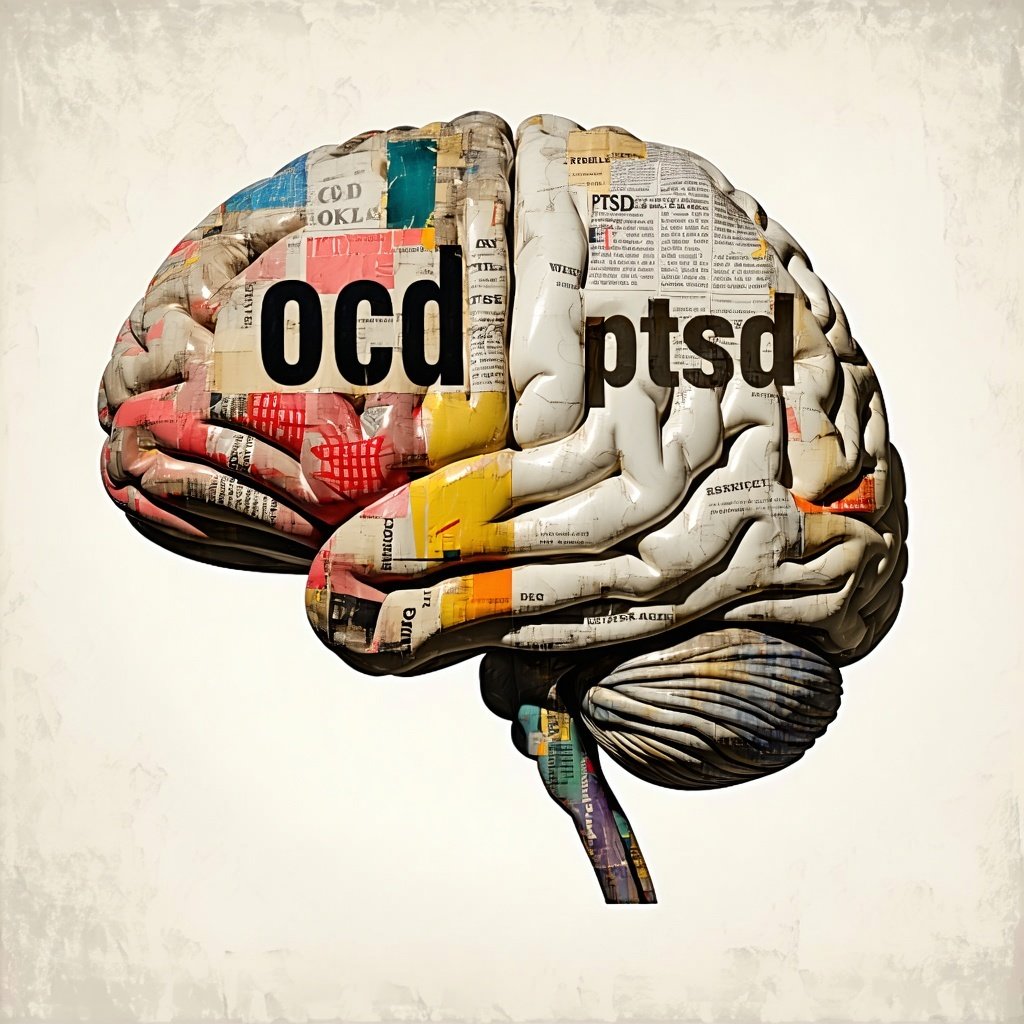ERP Therapy: Addressing OCD Misdiagnosis and Treatment
Obsessive-Compulsive Disorder (OCD) is characterized by persistent, unwanted obsessions and repetitive compulsions. According to the Diagnostic and...
4 min read
KD HOLMES, LPC, EMDR CERTIFIED, BTTI TRAINED
:
Jul 20, 2025 10:41:31 AM

When Obsessive-Compulsive Disorder (OCD) and Post-Traumatic Stress Disorder (PTSD) intersect, clinicians often find themselves navigating a clinical landscape that demands both precision and compassion. Both disorders are fear-based, yet they express themselves through different mechanisms: OCD through obsessional doubt and compulsive rituals, PTSD through re-experiencing, hypervigilance, and avoidance. Historically, Exposure and Response Prevention (ERP) has been the cornerstone of OCD treatment. But emerging research reminds us that when PTSD is in the room, our approach must shift.
Recent data suggest that around 5.2% of patients in intensive OCD treatment also meet diagnostic criteria for PTSD. But statistics only scratch the surface. Clinically, this comorbidity often shows up as more chronic, entrenched OCD symptoms, especially in domains like symmetry and unacceptable thoughts-content that frequently carries a trauma signature.
In Pinciotti et al.’s 2024 study of over 3,200 patients, individuals with comorbid PTSD needed nearly 11 additional days of intensive treatment to achieve the same gains as those with OCD alone. When trauma is present, the terrain of OCD shifts-and so must our strategies. (This study used 3,274 patients across two major intensive OCD treatment programs.)
ERP is highly effective for many individuals with OCD, but it requires a degree of emotional regulation and distress tolerance that PTSD symptoms can disrupt. When hyperarousal, dissociation, or trauma-related avoidance are activated, the mechanisms of ERP-habituation, inhibitory learning, corrective experience-often break down.
This was echoed in early findings by Gershuny et al. (2002), which showed that patients with comorbid PTSD experienced significantly poorer treatment outcomes when treated with ERP alone. The implication is clear: when trauma is unaddressed, it doesn’t stay quiet. It interferes.
(For all you Trauma therapists its not Trauma treatment first, and for all you ERP therapists-me included- its not ERP first.)
Rather than asking whether to treat OCD or PTSD first, we should be asking how to treat both-together, and in a way that respects their interconnection. Concurrent treatment models are gaining empirical support. In a 2022 pilot, patients receiving both ERP and Prolonged Exposure (PE) showed significant reductions in both OCD and PTSD symptoms. Dual-targeting uncertainty (ERP) and perceived danger (PE) allowed for broader gains.
As a trauma therapist, I often wonder: what if EMDR clinicians integrated the PE protocol into their EMDR approach? The results might be even more effective. Similarly, if you’re a therapist who prefers DBR, that protocol could be tailored to include elements of PE for optimal outcomes. While including ILM principles in the process.
Dynamic comorbidity refers to the way OCD and PTSD symptoms can be functionally intertwined. In many cases, compulsions serve as trauma regulation strategies, or obsessive fears mirror past traumatic experiences. When this is the case, ERP alone may not only be ineffective-it may inadvertently retraumatize.
In a compelling case study by Airdrie et al. (2023), Narrative Exposure Therapy was integrated with ERP and CBT for a client whose trauma history was deeply embedded in their OCD content. The result? OCD symptoms reduced to non-clinical levels, and PTSD symptoms improved significantly.
Certain symptom dimensions-especially unacceptable thoughts and symmetry obsessions-may indicate a trauma-relevant OCD presentation. These require greater nuance, often integrating cognitive work on shame, self-concept, and moral fear.
From a brain-based perspective, comorbid OCD and PTSD share overlapping yet distinct neural circuits. OCD involves hyperactivation of error-monitoring pathways, while PTSD reflects dysfunction in fear extinction networks. When both systems are firing, the avoidance is doubled-and the treatment must account for both.
When clinicians address only one layer, the other remains untouched. Or worse, it compensates. This is why integrated treatment models aren’t just philosophically compelling-they’re neurobiologically sound.
PTSD treatment research has shown that sequencing matters. A 2020 study found that leading with PE before EMDR produced better PTSD outcomes than the reverse. While this doesn’t directly translate to OCD-PTSD comorbidity, it reinforces the point that timing and order shape effectiveness.
In OCD-PTSD cases where OCD symptoms obstruct trauma work, ERP-first may be appropriate. But these are likely the exceptions. For many, concurrent treatment remains the more comprehensive-and more compassionate-approach.
Look for functional overlap. Are compulsions serving as avoidance of trauma memories? Is OCD content trauma-colored? These are indicators for concurrent care.
Modify hierarchies, pace, and exposure targets to align with the client’s nervous system and trauma history.
ERP, PE, Narrative Exposure, CPT-these aren’t competing methods. They’re complementary when delivered in collaboration.
Recovery may take more time. Set expectations accordingly. In Pinciotti’s sample, nearly two additional weeks were needed on average for comorbid cases.
Pay special attention to domains like unacceptable thoughts and symmetry, which may be more resistant in trauma-linked OCD.
Sometimes. When OCD is so severe that it blocks trauma work, or when PTSD symptoms are mild and functionally independent, ERP-first can be clinically justified. But this is not the norm.
More often, what’s needed is a flexible, integrated approach that sees the full ecology of the client’s symptomatology-not just the label on the intake form.
As clinicians, we are tasked with translating research into treatment-not as a script, but as a map. Effective care for comorbid OCD and PTSD requires moving from fidelity-only models to frameworks rooted in adaptability, collaboration, and deep listening.
There is no one-size-fits-all protocol for the OCD-PTSD intersection. But there is a growing call for clinicians to evolve alongside the evidence: to deliver ERP with a trauma-informed lens, to embrace concurrent treatment when indicated, and to center the lived experience of the client in every decision.
Our work is not just about reducing symptoms. It’s about honoring complexity, restoring agency, and building treatments that match the depth of our clients’ stories.
Let that be our guide.

Obsessive-Compulsive Disorder (OCD) is characterized by persistent, unwanted obsessions and repetitive compulsions. According to the Diagnostic and...

Trauma is a word that has been gaining more attention and importance in our society and in the therapy treatment world. We (therapists) all know what

There’s a particular kind of quiet that settles over the room when a client understands ERP and agrees to an exposure for the first time. It’s not...